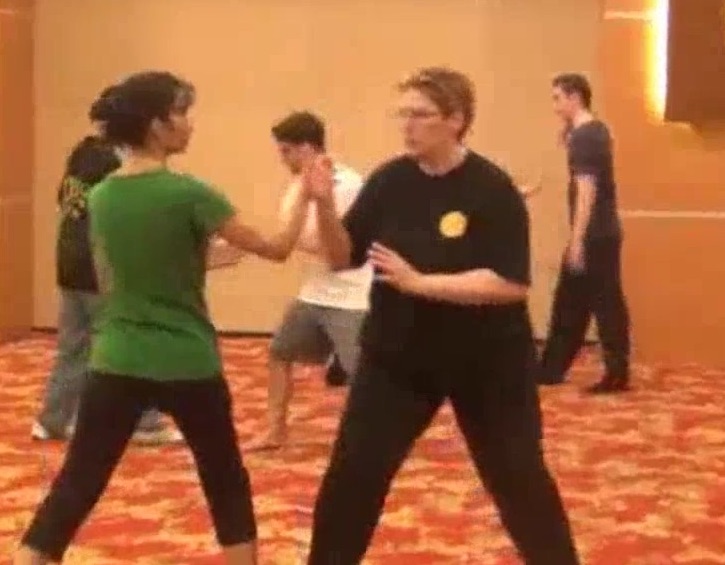BENEFITS OF TAIJIQUAN THAT OTHER MARTIAL ARTS DO NOT HAVE

Taijiquan, or Tai Chi Chuan
Question
You also have said that Taijiquan is a wonderful martial art? Can you please tell us what wonderful benefits Taijiquan has that other martial arts do not have?
— Ubaido, Italy
Answer
The word "quan" in "Taijiquan" denotes that it is a martial art. Literally "quan" means "fist". Here, it figuratively means "martial art" or "kungfu".
For example, in Chinese, Shaolin Kungfu is called "Shaolinquan", Xingyi Kungfu is called "Xingyiquan", and Wing Choon (which is "yong chun" in Chinese) Kungfu is called "Yongchunquan".
But unlike many other martial arts, Taijiquan is gentle. Indeed, the more relaxed a practitioner is, the more efficient his combat will be. This is interesting. In Taijiquan, if you are tensed or agitated, your combat efficiency will be affected.
Secondly, combat efficiency in Taijiquan deos not depend on size, age and gender! In many other martial rts, if you are bigger, younger and a male whereas your opponent is female, you have obvious advantages. But this is not so in genuine Taijiquan. You may be smaller in size, older, and female, yet you can defeat an opponent who is bigger, younger and male.
If you want to test your combat ability with your friends, but both you and your friends do not want to sustain injuries which are not uncommon in free sparring in other martial arts, you can engage in Pushing Hands. This is not exactly the same as free sparring, though Pushing Hands test combat skills, it does not necessarily mean that one who is better at Pushing Hands is a better fighter. But it serves as a substitute for free sparring -- a wonderful facility many other martial arts may not have.
Another wonderful benefit Taijiquan has over other martial arts is that Taijiquan training is spiritual cultivation, but it is not religious. As far as I know, the only other martial art that shares this wonderful benefit is Shaolin Kungfu.
Both Taijiquan and Shaolin Kungfu started as spiritual cultivation. In Taijiquan, practitioners aimed to attain the Tao, in Shaolin Kungfu, practitioners aimed for Enlightenment.
In other words, when Zhang San Feng, the First Patriarch of Taijiquan, taught his Wudang disciples the art that later evolved into Taijiquan, the main aim was to attain the Tao. When Bodhidharma, the First Patriarch of Shaolin Kungfu, taught the Shaolin monks the Eighteen Lohan Hands which later evolved into Shaolin Kungfu, the main aim was to prepare them for Enlightenment.
Other martial arts were practiced for health and combat, while many were practiced solely for combat. Some martial arts were even detrimental to health.
Hence, there are many wonderful benefits of practicing Taijiquan that other martial arts may not have. These wonderful benefits include being gentle while being combat efficient, being powerful irrespective of age, size and gender, the substitute of Pushing Hands for free sparring, and spiritual cultivation irrespective of religion.
The above is taken from Question 4 July 2017 Part 3 of the Selection of Questions and Answers.
LINKS
Courses and Classes
